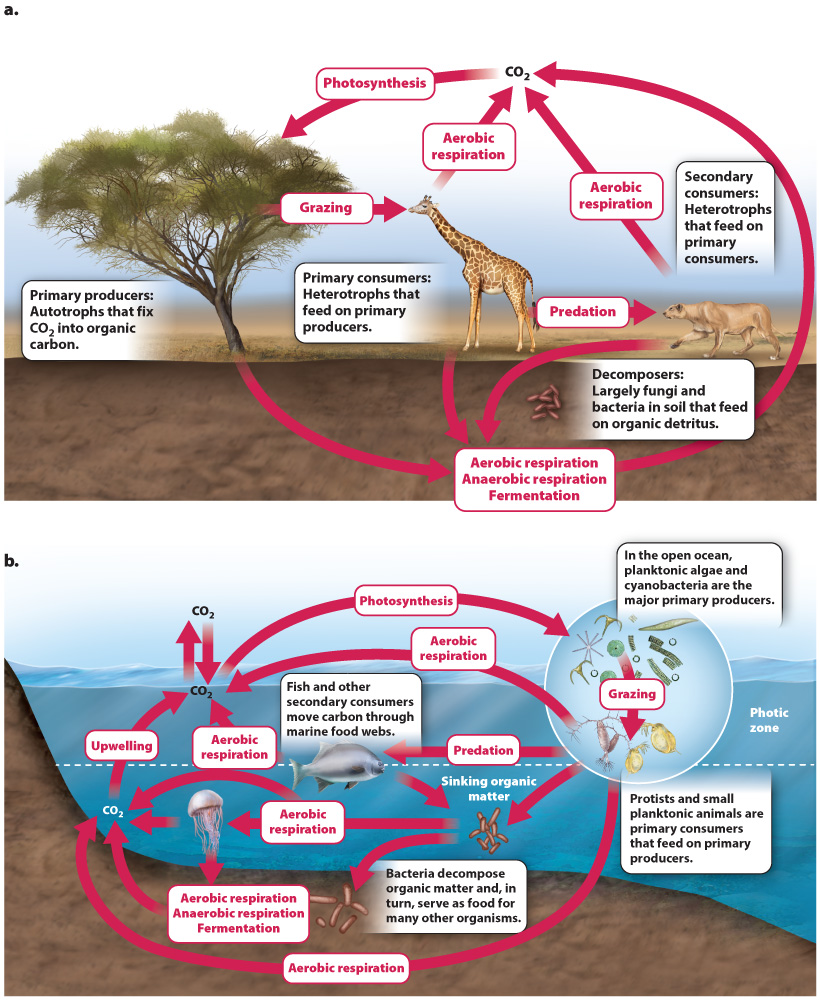The biological carbon cycle shapes ecological interactions and reflects evolution.
Fig. 48.15 shows how organisms cycle carbon through terrestrial and marine biomes, integrating concepts drawn from metabolism and ecology. All the ecological complexity of ecosystems and biomes begins with primary producers, the autotrophic organisms that convert carbon dioxide into organic molecules (Chapter 6).
1061

On land, primary production is dominated by a single phylogenetic group of photosynthetic organisms, vascular plants. The tremendous variety of forms observed among plants in different biomes reflects evolutionary adaptation to differing environments. In the oceans, many distinct groups of algae and cyanobacteria convert carbon dioxide to organic molecules, and again the diversity of these primary producers reflects adaptations to the physical and chemical features of different water masses. In the dark waters of the deep sea, primary production by chemoautotrophic bacteria can contribute in important ways to the carbon cycle.
1062
Consumers, from animals to bacteria, live on organic matter originally generated by primary producers, their diverse forms again reflecting evolutionary adaptation to different food sources and predators. As emphasized in Chapters 25 and 26, plants and animals may be the most conspicuous components of the biological carbon cycle, but it is the microorganisms—
The key point is that ecology and biogeochemical cycling are not separate processes. Ecological interactions cycle carbon rapidly through ecosystems and biomes, and the leaks in this cycle, with some organic remains accumulating in sediments, link the biological carbon cycle to the longer-